 Your new post is loading...

|
Scooped by
Patrick H.
|
Abu Dhabi Ship Building (ADSB) has announced the completion of the Ghannatha Phase II programme after delivery of all 24 vessels to the UAE Navy. Built to a design developed by partner Swede Ship Marine (Stand C-015), the Ghannatha-class boats are high-speed, aluminiumbuilt multi-role combat vessels. Powered by two MTU diesels driving twin Rolls-Royce FF 600 waterjets, the design is capable of speeds up to 45kts. ADSB (Stand B-022) won the Ghannatha Phase II contract, valued at nearly AED1 billion, in 2009. Under the deal, the company has delivered 12 new 27m Ghannatha boats to the UAE Navy, and retrofitted modifications to 12 existing 25m craft. Six of the original vessels have been modified as mortar boats,receiving the Patria Nemo 120mm smooth-bore mortar system, plus an OTO Melara Hitrole-G 12.7mm gun mounting. These vessels have also received a GEM surveillance radar and updated VHF/UHF communications. The other six 25m Ghannatha boats have been modified to serve as fast gun boats, equipped with a Rheinmetall MLG 27 27mm gun and a Hitrole-G 12.7mm mounting. They also retain the capability to embark up to 40 troops. Swede Ship Marine, as ADSB’s principal sub-contractor, took responsibility for the design modification package for the 12 ‘stretched’ new-build vessels, and built the first three in Sweden. The nine follow-on craft have been built by ADSB at its shipyard in Abu Dhabi’s Mussafah industrial area. As well as being 2m longer than the original 25m Ghannatha design, these later ships have also received more powerful MTU 12V 2000 M93 engines. All 12 of the later ships are configured as missile boats, being equipped with four box launchers for MBDA Marte Mk 2/N surface-to- surface guided missiles. The Marte Mk 2/N missile is able to strike targets at ranges in excess of 30km, flying a fire-and-forget sea-skimming profile using mid-course inertial guidance and active radar homing. The vessels are also fitted with a mini-combat system supplied by Selex ES and a GEM radar for surveillance and target indication. Abu Dhabi Systems Integration (ADSI) has taken responsibility for combat system engineering and integration activities for the Ghannatha Phase II programme. ADSI, a joint venture between ADSB and Selex ES, has overseen combat system definition and design, production, support to installation, setting-to-work, integration, commissioning and acceptance.

|
Scooped by
Patrick H.
|
The Baynunah Corvette Class Programme is one of the biggest warship construction programme implemented by the ADSB for the UAE Navy. The Abu Dhabi Ship Building Company (ADSB) has delivered Al Hili, the sixth and last of the Baynunah Corvette Class Programme, to the UAE Navy in a grand ceremony attended by Rear Admiral Ibrahim Al Musharrakh, Commander of the UAE Naval Forces, top navy officers and Khaled Al Maraikhi, Chief Operating Officer, ADSB, and Chief of Pakistani Naval Staff Admiral Asif Sandila. Baynunah Corvettes are a unique class of warship with multi-mission capabilities, including coastal patrol and surveillance, mine detection and avoidance, helicopter operations, as well as anti-air and anti-surface capabilities. In performing these missions, Baynunah will utilise the very latest in weapons and sensor technology. Al Maraikhi said in his address during the ceremony on Thursday that the Baynunah Corvette Class Programme is one of the biggest warship construction programme implemented by the ADSB for the UAE Navy. He noted that delivery of Al Hili represents an important, positive step towards self-reliance in military production. Construction of the ship started on September 27, 2009 and it took to the water on Thursday. The ships of this class have steel constructed hull and deck, with superstructure fabricated from aluminum. The superstructure arrangement is designed to minimise radar cross-section. Each of the highly advanced Baynunah Class Corvettes can be deployed for various missions, including coastal patrol and survey, helicopter operations, and peacetime patrols. The ship is designed to provide the navies with a multi-role surface vessel capable of sustained operations throughout the GCC region. The vessels are designed to conduct peacetime patrols in their territorial waters and exclusive economic zones, together with surveillance, maritime interdiction, support to other forces, and the protection of coastline and ports.

|
Scooped by
Patrick H.
|
ABU DHABI: The United Arab Emirates Navy has taken delivery of the third Corvette (Al Dhafra) from Abu Dhabi Shipbuilding Company, the leading shipbuilder and naval support services provider in the Gulf region. The vessel, part of the six Corvette Class Programme for the UAE Navy, was delivered in a grand ceremony Tuesday. Vice Admiral Ibrahim Salem Al Mushrekh, commander of the navy, signed the delivery paper of the Al Dhafra and then took a tour of the vessel and raised the UAE flag on it. The warships are a unique class of vessels with multi-mission capabilities, including coastal patrol and surveillance, mine detection and avoidance, helicopter operations, as well as anti-air and anti-surface capabilities. It is the biggest warship construction programme in the region consisting of six state-of-the-art warships for the UAE navy. Each of the 72-metre highly-advanced ships can be deployed for various missions. The key features of the warships include a stealth-like superstructure, a helicopter landing deck and a hangar. They will also be fitted with anti-ship missiles, air-defence missiles, 3D surveillance, navigation and fire control radars and a multivendor electronic warfare suite.

|
Scooped by
Patrick H.
|
The Persian Gulf has long been a waterway of strategic importance. On average, $105 billion worth of goods are exchanged between Iran and the Gulf states each year. In addition, approximately 20% of the world’s petroleum traverses the Strait of Hormuz, a narrow passage between the Persian Gulf and the open seas. Clearly, ensuring the security of this body of water is vital to the health of the global economy. In this respect, the US Navy’s Fifth Fleet fulfills a significant role, as does Combined Task Force 152, a multinational contingent patrolling the Persian Gulf since 2004. But what role do regional navies play in securing these same waterways? To address this question, it is worthwhile examining the corvettes employed by the Islamic Republic of Iran, the Republic of Iraq, and the countries of the Gulf Cooperation Council. These smaller, lighter vessels are sufficiently maneuverable to navigate the narrow waterways that characterize the region. Corvettes are also for the most part the heaviest vessels operated by the region’s maritime forces. Comparing the corvettes can provide valuable insight into the current and future balance of naval power in the Persian Gulf. The Royal Navy of Oman (RNO) is representative of the rapid development taking place in the region’s maritime forces. For several years, the RNO has depended largely on its two Qahir-class corvettes (1,450 tons), which have been in operation since 1996. Beyond this pair of vessels, the RNO operated a single patrol ship, Al-Mubrukah; having begun life as a royal yacht, it was converted to a training ship for a time, then was re-designated to patrol Omani waters in 1997. However, the RNO has commissioned three Khareef-class corvettes (2,660 tons) from BAE Systems, based in Portsmouth, UK. The first of these vessels, Al-Shamikh, was delivered in October 2013. The remaining two Khareef-class corvettes, Al-Rahmani and Al-Rasikh, are expected in 2014 and 2015 respectively. The United Arab Emirates Navy also has ambitions to expand its capabilities, though these plans are at an earlier stage. Purchases have been made for six Baynunah-class missile corvettes (915 tons) to replace the country’s six aging Ardhana-class patrol craft (175 tons), which have been in operation since 1976. While one of the new vessels have been completed, the remaining five are not expected for several years due to the relative inexperience of Abu Dhabi Shipbuilding, the local shipbuilder. Even so, the shipbuilder has expressed its hopes to secure further orders of this class for the Kuwaiti and Saudi maritime forces. Aside from the expected Baynunah-class vessels, the UAE’s complement of corvettes is currently comprised of three Abu Dhabi-class corvettes (1,650 tons) and two Muray Jib-class corvettes (630 tons). The former were acquired as recently as 2011, produced by the Italian shipyard Fincantieri. The latter were produced by Germany’s Lürssen in 1990-1991.

|
Scooped by
Patrick H.
|
Three more patrol coastal ships were offloaded in Bahrain July 3, bringing to 8 the number of PCs forward-deployed with the U.S. Navy’s Fifth Fleet. The little PCs were at first scorned when they entered service in the mid-1990s, rejected by the special operations warfare community they were built for as too big. A new lease on life was found after 9/11, when the Navy needed craft to patrol the U.S. coasts, but even that need mostly fell off. Some were sent to the Gulf in 2003 and 2004 to support Operation Iraqi Freedom – a mission that kept the craft steadily employed – but some of those that remained in the U.S. fell by the wayside, becoming little more than spare parts sources for the vessels that remained running. But U.S. Central Command’s need for small, fast, handy ships able to operate with smaller navies and easily navigate shallow coastal waters has brought the PCs back into demand. At 334 tons full load, with an overall length of 178 feet and a crew of about 30, the craft are well-suited to operations in the region. Armed with two Mk 38 25mm automatic guns, numerous smaller weapons, and now being outfitted with the Griffin surface-to-surface missile, the craft are better armed than when they entered service two decades ago. The ships that were virtually out of service have been refitted and modernized, and further improvements are in the works. The three newly-arrived ships – Tempest (PC 2), Squall (PC 7) and Thunderbolt (PC 12) – were all refitted in the U.S. and are more effective than ever, with new, stabilized gun mounts, better sensors, and rebuilt engines and hulls. In Bahrain, they join the Typhoon (PC 5), Sirocco (PC 6), Chinook (PC 9), Firebolt (PC 10) and Whirlwind (PC 11). Two more craft, Hurricane (PC 3) and Monsoon (PC 4), will transfer to Bahrain in mid-2014. The remaining ships in the U.S., Zephyr (PC 8), Shamal (PC 13) and Tornado (PC 14), will eventually shift homeport from Little Creek, Va., to Mayport, Fla. (For those of you keeping score, PC 1, the Cyclone, was decommissioned in 2000 after less than seven years of service, and was transferred to the Philippines in 2004 as the General Mariano Alvarez.)

|
Scooped by
Patrick H.
|
The on-going efforts of MBDA to expand the capabilities of its anti-ship missiles could reach an important milestone in the coming months through a potential partnership in the Middle East. During the European consortium's 2012 results conference in Rome on 22 March, Antonio Perfetti, managing director of the MBDA's Italian branch and executive group director sales and business development, revealed that a Middle Eastern country is interested in the joint development of a Marte ER (extended range) version. "The growth potential of [the] Marte anti-ship missile family has attracted the interest of a Arabian Gulf industrial partner, looking to jointly develop the new extended-range version of the family," said Perfetti. While he declined to provide further detail, Flightglobal understands that the United Arab Emirates is the nation interested in a joint development of the new version, and that subsidiaries of state-owned investment company Tawazun Holding are to be involved in the programme. Tawazun Precision Industries entered into an agreement with MBDA during the 2011 IDEX exhibition in Abu Dhabi to manufacture various components for the Marte family. The company produces the newly developed canister for the Mk2/N ship-launched version of the missile. This is part of the equipment of the UAE naval forces' Ghannatha fast boat, the first of which was recently delivered. Tawazun Precision Industries also inked a supply agreement with Selex ES at the 2013 IDEX exhibition in February to manufacture various components for the Finmeccanica subsidiary's RF seekers, a key component in the MBDA Italy Marte/Otomat anti-ship missile family. The Marte ER is planned to operate at ranges in excess of 100km (54nm) and be capable of being carried by medium-to-heavy helicopters. But it should also be possible to launch the equipment from fixed-wing combat and maritime patrol aircraft, have comparable life cycle costs to the current version and offer growth potential, including a man-in-the-loop and land attack strike with a heavier warhead. MBDA Italy has already completed ground fitting-out trials of a Marte ER maquette with the Eurofighter Typhoon. Aside from the extended range and naval (Mk2/N) versions, the Marte missile family includes the helicopter-based (Mk2/S) and aircraft-launched (Mk2/A) models. A dummy version of the latter has previously been dropped from an Airbus Military C295 maritime patrol aircraft.

|
Scooped by
Patrick H.
|
The UAE Navy has awarded a contract to Abu Dhabi Ship Building (ADSB) and Al Yah Satellite Communications Company (YahSat) to provide satellite communications systems under the Baynunah-class multipurpose missile corvette programme. Under the contract, equipment delivered by YahSat and Rohde & Schwarz will be modified and installed onboard the Baynunah-class ship fleet by ADSB. In addition, Constructions Mécaniques de Normandie (CMN) and SELEX will deliver additional project technical support for the programme. YahSat chief executive officer Tareq Al Hosani said: "Network security and uninterrupted service are constant concerns for maritime customers, our solution has been designed to provide connectivity and real-time data to meet their needs." In January 2004, the UAE Ministry of Defence (MoD) placed orders with ADSB to develop and deliver four Baynunah-class multipurpose missile corvettes with an option for additional two vessels, which was exercised in July 2005 in a $1bn deal. The Baynunah-class corvettes will support missions such as patrol and surveillance, minelaying, interception and other anti-surface warfare operations for the UAE in territorial waters and exclusive economic zone. Featuring a stealthy structure, the corvettes are armed with the Mk48 vertical launcher for Evolved SeaSparrow Missile (ESSM), Mk49 mod3 21-cell RAM launcher for the RAM block 1A missile system, as well as the main gun Oto Melara 76/62mm Super Rapide. Capable of accommodating 55 officers and other crew members, the ships are equipped with electronic warfare suite comprising NLWS310 laser warning systems, Elettronica SLR-736E radar electronic support measures systems (ESM) and Thales Altesse communications ESM. The UAE Navy is expected to receive all six corvettes by 2014, as reported by marinelink.com.

|
Scooped by
Patrick H.
|
Abu Dhabi Ship Building (ADSB) this week announced the vessels and offerings it has registered for the Naval Defence Exhibition (NAVDEX) 2013. As lead sponsor of NAVDEX, ADSB plans to have a total of three vessels on display dedicated to naval defence and maritime security, along with a 120 sqm stand reflecting the organization's broader service and refit offerings.ADSB's manufacturing, repair and re-fit capabilities are fast establishing Abu Dhabi as a regional hub in the naval defence industry," said Ian Pike, Acting CEO.
"From our base in Abu Dhabi, ADSB successfully provides products and related services to defence decision makers across the GCC and beyond. NAVDEX 2013 is key in helping us reach out to our existing clients, build relationships with new ones and discuss developments in this fast moving industry," he added.
ADSB vessels on display at NAVDEX this year include the MRTP16 High-Speed Interceptor, 27m Ghannatha Class Missile Boat and 72m Baynunah Corvette. Built from high-tech composite materials including kevlar and carbon fibre, the 26 tonne high-speed interceptors reaches speeds in excess of 65 knots. They are powered by MTU engines driving Arneson Surface Drives, have a crew of 5 and are used for quick response missions.
Manufactured in marine grade aluminium alloy, the 45 tonne Ghannatha Class Missile Boats reach speeds in excess of 40 knots. Powered by MTU engines and Rolls Royce Waterjet propulsors, the vessel can be offered in various configurations as a fast troop carrier, mortar boat, gun boat and missile boat.
The largest Abu Dhabi-built vessel on display at NAVDEX will be the 72m Baynunah Corvette. Designed in conjunction with ADSB's strategic partner CMN of France, these vessels represent the very latest in naval capability. They are manufactured in steel (hull) and aluminium alloy (superstructure) and have a maximum speed of 30 knots thanks to a quad MTU engine installation and triple Rolls Royce waterjet configuration.
The corvette is also fitted with a plethora of weapons systems including three types of missiles and two types of guns. It is fitted with the very latest technology sensors and communications suites. The vessel is also capable of handling a five tonne naval helicopter and has also been designed to be fitted with a hangar as well as the HELO Deck.
Organised by the Abu Dhabi National Exhibitions Company in coordination with the UAE Armed Forces GHQ, NAVDEX will take place at Abu Dhabi's National Exhibition Centre from the 17th - 21st of February, 2013.

|
Scooped by
Patrick H.
|
The UAE will invest in ships with cutting-edge technology to better secure its waters against maritime threats such as piracy and terrorism...
...The competition with other sectors for human resources is tough. It is also making the Navy not as attractive as it could be to prospective recruits," he said, and personnel needed technical training and a dedicated naval school in the UAE.
Rear Admiral Al Musharakh said the navy might soon invest in additional fast offshore patrol vessels.
"The flexibility of such offshore vessels is a tempting option for the UAE in securing its territory," he said, but authorities were still studying the advantages of various new designs.
Rear Admiral Giermann encouraged the idea. "My concern is neglect, because the navy is too small. One must keep pace with development or one might fall back."
|

|
Scooped by
Patrick H.
|
Pakistan can deliver ships of any size “minus the aircraft carrier” to Gulf countries, especially Qatar, at 30% less construction cost than what Western manufacturers offer, a senior Pakistani official has said. In an interview, Rear Admiral Syed Hasan Nasir Shah, who is a serving Pakistan Navy officer and managing director of Karachi Shipyard & Engineering Works (KSEW), said his organisation’s various international certifications prove that the country’s ship- and submarine-building capacity is on a par with the best in the world. Pakistan has only one shipyard, the KSEW, which comes under its Ministry of Defence Production. Even though its naval forces boast of an impressive array of indigenously built fleet of warships and submarines, the country today is known more for its ship-breaking industry at Gadani than its modern facilities at the KSEW. When asked how the KSEW plans to create a space for itself in the extremely competitive environment, Shah said his shipyard offers many advantages to potential customers in the Gulf, least of which is geographical proximity. “The best advantage of our shipyard is in the quality of our manpower and affordability in terms of man hours,” he said. He explained that these days, around 40% of the total cost of building a ship in Europe goes into the material for electronics, weapons and auxiliary systems. The remaining 60% goes into manpower and construction. “Our edge is that we can cut the cost of that 60% into half. So, if you want to buy a ship of European standard, you will not only get the best of the world from our Karachi shipyard, but also be able to save 30% on the cost of construction. That is the promise I am making to our friends in the Gulf region, especially in our interactions with senior Qatari officials,” he said. About the types of ships that can be built, the senior official said: “We can build any ship in the world minus the aircraft carrier. We can build a deep-sea submarine or frigate-sized warship. We are not into making Very Large Crude Carriers or the Ultra Large Crude Carriers, but we can do that, too, if we wanted because they are the easiest ships to make… they are like building shoe boxes.” Since it was established in 1956, the shipyard has built more than 440 ships and repaired over 500 others. At the moment, the KSEW is not so much in the international competition. Though it has orders to build ships within the country, it is still lacking in bagging orders from abroad. “KSEW in the last eight years has delivered state-of-the-art frigate, missile crafts and harbour utility vessels. Currently, we are building a massive 17,000-tonne fleet tanker, which even most top shipbuilders are not making today,” he said. The official hinted that ship deals also had to do more with government-to-government relations and economy of the country. Nonetheless, he added that the shipyard had recently given detailed proposals to clients in Saudi Arabia and Yemen, though a deal was yet to conclude there. In the past, though, the KSEW has built ships for Gulf countries. “We have in the past delivered ships to Saudi Arabia and the UAE. In fact, the first Baynunah-class ship was made in (the) Karachi shipyard in the early ‘70s for the UAE. When Sheikh Zayed bin Nahyan came to Karachi to take possession of the ship, it was a historic day for us.”

|
Scooped by
Patrick H.
|
ABU DHABI — The French Navy is ready to share with gulf countries their submarine “know-how” if called upon, a senior naval commander said. Amid recent heightened interest from Gulf Cooperation Council (GCC) navies regarding submarine acquisition, Rear Adm. Eric Chaperon, commander of French Navy Task Force 473 Strike Group, said, “The French Navy has a lot of expertise from their long history in the matter of submarines. “This expertise and know-how can of course be shared, but I cannot give you more details about the interactions we have had with other parties in the region,” he added. Saudi Arabia was reportedly interested in acquiring five German-made Type 209 submarines at a cost of $3.4 billion, according to the German newspaper Bild in November. Last year, UAE Naval Commander Rear Adm. Ibrahim Al Musharrakh said that the UAE Navy is looking to acquire submarines to combat threats in the gulf’s littoral waters. “There are many different options for combating the threat of submarines in the region, for building the capacity and the capability to acquire submarines is something that is still under process and will take a long time,” Al Musharrakh said at the Gulf Naval Commanders Conference in Abu Dhabi last November. The French strike group is in the region to secure the strategic maritime sea lanes of the Strait of Hormuz, the Gulf of Aden and the Red Sea as well as enhance cooperation and interoperability with navies in the region, according to Chaperon. The strike group, which is made up of the aircraft carrier Charles de Gaulle, two destroyers, a supply vessel and a nuclear attack submarine, made port calls in Saudi Arabia last month and in Qatar earlier in January before docking Wednesday in Abu Dhabi. “France is ready to assume its responsibilities throughout the world, as she demonstrated in Libya, in Mali and more recently, in Central Africa,” Chaperon said. “France considers that the stability of the Middle East is one of her priorities; it is a region which is at the heart of her strategic interests and which is affected today by multiple crises such as piracy and terrorism. “Her commitment to the countries of the region is shown in the will to respond to their needs as a long-term strategic partner; this is at the heart of the defense agreement that was signed by France and the United Arab Emirates in 2009,” he added. The strike group carried out exercises with the Saudi and Qatari navies and is due to conduct a joint exercise, dubbed Big Fox, with the UAE Armed Forces at the end of January and with the US Navy in February in the Indian Ocean. Visiting the Charles de Gaulle was UAE Foreign Minister Sheikh Abdullah Bin Zayed Al-Nahyan, who was briefed about the strike group and its mission. On board the carrier were 10 F-3 Rafale fighters, the most advanced fighters to enter service in the French Air Force. The ship also carries two E-2C Hawkeye aircraft, two EC725 Caracal and AS532 Cougar helicopters for combat search and rescue. He added that the visit to Abu Dhabi would provide France the opportunity to further bolster its already strong ties with the UAE, particularly in sharing expertise and ideas and developing better methods of training and operational capabilities.

|
Scooped by
Patrick H.
|
At the Dubai Airshow 2013, which was held in November, UAE based company ADCOM Systems which specializes in Unmanned Aerial Vehicles (UAV) unveiled its “NAVY UAV”. This new UAV project is designed specifically for Anti-Submarine Warfare (ASW). This makes it the world’s first fixed wing UAV project dedicated to ASW missions. The Navy UAV is based on ADCOM’s existing UNITED 40 block 5, a Medium Altitude Long Endurance (MALE) UAV. The Navy UAV has a wingspan of 17.53 meters and a length of 11.13 meters. Its payload capacity is 1050 kg (2315 lb). Its glider-like, high aspect ratio wings and dual engine set up allows for endurance in excess of 100 hours. According to ADCOM, the Navy UAV would detect submarines through the use of sonobuoys. The ASW UAV is expected to carry a maximum of two torpedoes and would detect and attack submarines autonomously or with live control from an operator depending on the mission and flight plan.

|
Scooped by
Patrick H.
|
ABU DHABI — Iranian midget submarines are an imminent threat to maritime security in the Arabian Gulf, and regional naval leaders are looking for immediate options “within reach” to counter the threat. That means acquiring anti-submarine weaponry in the short term and new submarines in the longer term, said Rear Adm. Ibrahim al Musharrakh, commander of United Arab Emirates (UAE) naval forces. “Anti-submarine operations are causing a real challenge to our units in the Arabian Gulf waters due to the small subs that are being used in shallow waters, which creates a challenge for sonar systems to detect them,” Musharrakh told the Gulf Naval Commanders Conference here Nov. 6. “Furthermore, the merchant traffic creates clutter and noise that diminishes the capability of submersible devices to spot and helps the mini subs to operate without being spotted.” The Iranian Navy and Revolutionary Guard Command have launched three classes of submarines, two of which are small subs, since 2007. The programs, however, have been very secretive and limited information has been released on them by the Iranian naval command. According to the Nuclear Threat Initiative (NTI), a nonprofit nuclear watchdog, three Kilo-class diesel-electric submarines were commissioned from 1992 to 1996. They are called Tareq-class subs in Iran. Iran reportedly paid US $600 million for each boat, and they are all based at Bandar Abbas in the Strait of Hormuz. Two of the Kilo-class submarines are operational at any one time and are occasionally deployed in the eastern mouth of the strait, the Gulf of Oman or the Arabian Sea. However, the real threat is from the smaller submarines deployed in 2007. According to the NTI, that’s when a wave of deployments began of small Ghadir-class and Nahang-class midget submarines for use in shallow coastal waters. NTI reports that the number of operating Ghadir-class submarines ranges from 10 to 19. The Ghadir-class is also referred to as a sub-class of the Yono class, suggesting that the submarines may be based on North Korean technology, although the level of North Korean involvement is unknown, the organization said. The midget subs are operated by both the Iranian Navy and Iranian Revolutionary Guard Corps Navy (IRGCN). Their operational capabilities include firing torpedoes (both the Ghadir and the Nahang class have two, 533mm tubes), laying mines for anti-shipping operations, as well as insertion of special forces into enemy territory. Iran is also experimenting with wet submersibles. The Sabehat-15 GPS-equipped two-seat submersible swimmer delivery vehicle (SDV), designed by the Esfahan Underwater Research Center, has undergone testing with both the Iranian Navy and the IRCGN. Due to their limited endurance and payload, NTI’s report on Iranian Submarine Capabilities released in July states that the SDVs are primarily used for mining, reconnaissance and special operations and are restricted to operating in coastal waters. Musharrakh stated that, despite the information collected, there remains a lack of intelligence. “The Arabian Gulf’s natural incline and the navigation of large marine vessels on certain routes would make it very hard for conventional and mini submarines to operate in it,” he said. “However, they still present a clear danger to units operating in the gulf, infrastructure and merchant traffic.” “We need accurate intelligence on the capabilities of these small boats, their operations, areas they are deployed and how they are operated as well as their weaknesses,” he added. Col. Yousif al Mannaei, deputy commander of the Bahrain Naval Operations Center, echoed Musharrakh’s call for more intelligence collection. “As we all know that the sea is very vital for our well being and the world economy, the air supremacy and surface supremacy has been achieved,” he said. “However, we have no subsurface superiority in the Arabian Gulf waters. “It is a real threat, and the [Gulf Cooperation Council] really understands that and are pursuing ways to counter that; at this point, the exchange of information and intelligence sharing, as well as the formation of a database, is vital,” he said. Musharrakh said many options are available in the long term, including the acquisition of a submarine fleet. “There are many different options for combating the threat of submarines in the region, for building the capacity and the capability to acquire submarines is something that is still under process and will take a long time.” He stressed that the threat is imminent and could strike at any moment. “What we need is something within reach that we can use to counter the threat now; in the long term, you will probably see naval forces in the region acquiring submarines,” he added. The UAE Navy has ongoing development programs of unmanned surface vessels, among others, but Musharrakh told Defense News that, until now, no defense contractor has presented a clear and viable solution to the threat. “USVs have not yet proven themselves as viable and effective solutions to combat midget subs,” he said. “What we need are ships with a crew and capability to follow and track these ships, and capable of using the next-generation sonar that can spot them,” he told Defense News.

|
Scooped by
Patrick H.
|
Fincantieri Muggiano (La Spezia) shipyard in Italy has delivered the patrol boat 'Salahah' to the United Arab Emirates' Navy. The new ship's sister the Ghantut was delivered last January together with an "Abu Dhabi Class" corvette. The two patrol vessels – whose names come from an area of the Emirates near Abu Dhabi – were ordered in 2010 within the “Falaj 2” program.
The contract provides for an option for a further two vessels in addition to technology transfer to a local shipyard for the construction of further sister ships.
The patrol vessels “Ghantut” and “Salahah”, at 55 metres long and 8.60 wide, are capable of reaching over 20 knots and can accommodate a crew of 28. Their main feature is their particular 'stealth' geometry which will make them difficult to trace by radar.
Further features are their high capacity and flexibility in carrying out different mission profiles – ranging from patrolling and observing to self defence in case of threats from the air and surface and attack against both naval and land targets – in national and international operations, whilst at the same time affording high standards of accommodation and safety.
The delivery ceremony, beginning with a recitation of the Quran, was conducted in the presence of Rear Admiral Ibrahim Salem Mohamed Al-Musharrakh, Head of the UAE Navy, Admiral Giuseppe De Giorgi, Chief of the Italian Navy (who was represented on this occasion by Vice Admiral Andrea Toscano, Commander in Chief of Northern Tyrrhenian Sea Department) and Alberto Maestrini, Fincantieri Executive Senior Vice President Naval Vessels. Fincantieri add that they have set up Etihad Ship Building – a joint venture with Al Fattan Ship Industries and Melara Middle East. The new company operates in the design, construction and sale of different types of civilian and military vessels, as well as carrying out maintenance and refitting.

|
Scooped by
Patrick H.
|
Abu Dhabi Ship Building (ADSB), the Arabian Gulf’s only specialized naval warship builder today announced the Kuwait Navy has selected the company for their future Landing Craft programs.
The announcement by ADSB, one of Mubadala’s defense-related companies, took place during the International Defense Exhibition (IDEX) 2013 which takes place 17th - 21st February. Ian Pike, Chief Executive Officer of ADSB, said, “Abu Dhabi Ship Building has been working hard on this program requirement for some time. We also thank the Kuwait Ministry of Defence and the Kuwait Naval Force for their kind cooperation and confidence in our work.”
The program involves the supply of two 64m Landing Craft, one 42m Landing Craft and five 16m Composite Fast Landing Craft. All vessels will be constructed at ADSB’s world class facility in Abu Dhabi.
After several delegation visits to ADSB, the Kuwait Naval Commander Brigadier General Jassim Al Ansari said, “We are extremely pleased to advise of our co-operative discussions with ADSB for our new program requirement. We recognize ADSB as a highly professional company and will look forward to concluding our discussions positively in the very near future.”
The total contract program is approximately 24 months, and construction is anticipated to start in mid-2013.

|
Scooped by
Patrick H.
|
Les Emirats présentent à NAVDEX 2013 le patrouilleur lance-missile Ghannattha que construit Abu Dhabi (ADSB)

|
Scooped by
Patrick H.
|
The delivery ceremony of two vessels for the United Arab Emirates Navy was held today at the Fincantieri shipyard in Muggiano (La Spezia).
These were an "Abu Dhabi Class" corvette, launched in February 2011, and the "Ghantut" patrol vessel, launched at the same yard in January 2012. In the presence of Rear Admiral Ibrahim Salem Mohamed Al-Musharrakh, Head of the UAE Navy, Admiral Luigi Binelli Mantelli, Italian Navy Chief of Staff, who was represented on this occasion by Vice Admiral Alberto Gauzolino, Logistic Support and Light houses Inspector, Vice Admiral Andrea Toscano, Commander in Chief Northern Tyrrhenian Sea Department Italian Navy, Vice Admiral Ernesto Nencioni, Director for Naval Armaments and Alberto Maestrini, Fincantieri Executive Senior Vice President Naval Vessels, the ceremony began with the characteristic recitation of the Qur'an in accordance with the dictates of Islam. Exemplifying Fincantieri's product excellence, both vessels stand out for their high level of flexibility in being able to carry out different types of mission in national and international waters (from patrol and surveillance, to defence against air and surface threats and attack against both land and sea targets), as well as for their high standards of accommodation and safety. As evidence of the strategic importance of the Middle East market and the strong and fruitful partnership initiated with the Emirates, Fincantieri has set up the company Etihad Ship Building in Abu Dhabi as a joint venture with Al Fattan Ship Industries and Melara Middle East; the purpose of the company, which is already operational, is to design, construct and sell both civilian and military ships, as well as carry out maintenance and refitting.
In fact, now more than ever, securing foreign orders means ships being built in local shipyards. It is therefore necessary to be suitably equipped to ensure that customers obtain quality and rapid delivery.
Fincantieri will be present from 17 to 21 February at the important "Idex" defence industry exhibition in Abu Dhabi, with an exhibit on the megayacht sector.
|



 Your new post is loading...
Your new post is loading...




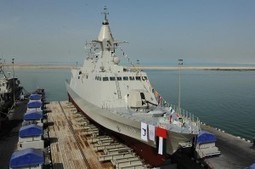


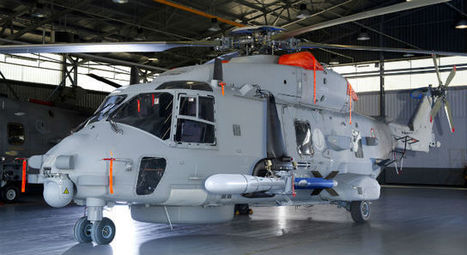

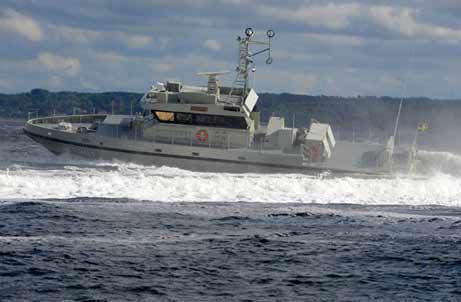
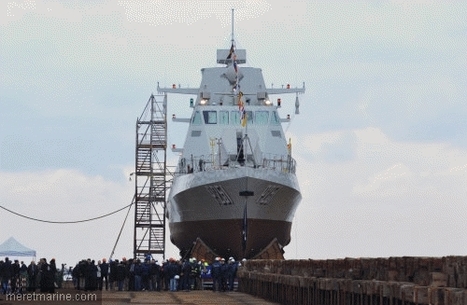

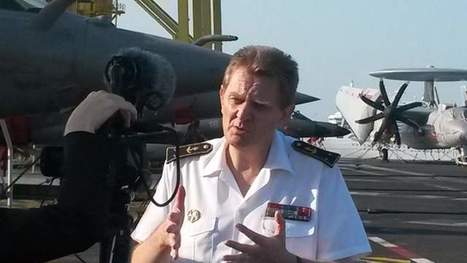
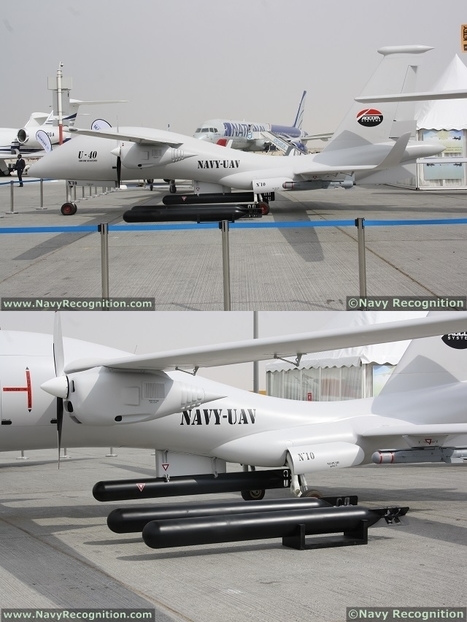
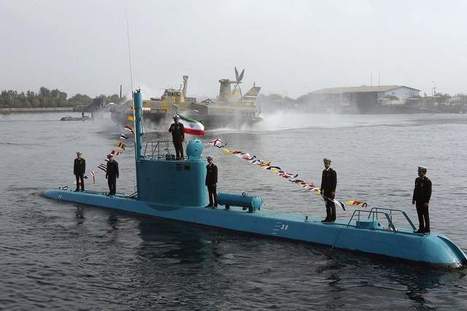
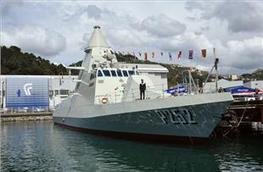
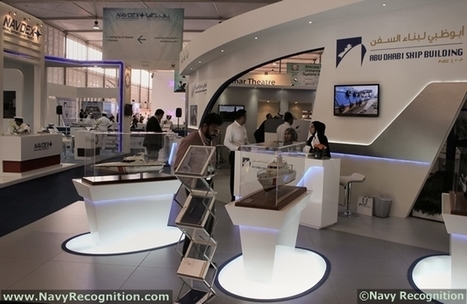

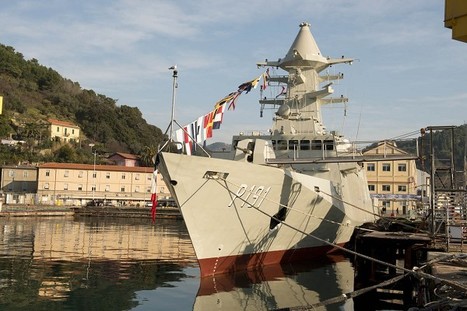





Retour sur le déroulement de ce programme :
http://sco.lt/4ssq6z
Les 3 premiers de la série ont été construits en Suède par Swedeship Marine.
Le 1er construit localement avait été lancé à ADSB en juillet 2012 :
http://www.thenational.ae/thenationalconversation/industry-insights/economics/first-ghannatha-class-missile-boat-launched-in-abu-dhabi